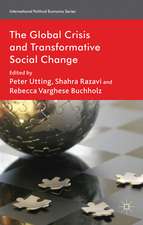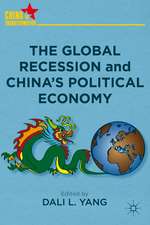Europe: One Continent, Different Worlds: Population Scenarios for the 21st Century: European Studies of Population, cartea 7
Editat de Joop de Beer, Leo J.G. van Wissenen Limba Engleză Paperback – 16 oct 2012
Din seria European Studies of Population
-
 Preț: 231.11 lei
Preț: 231.11 lei - 15%
 Preț: 644.49 lei
Preț: 644.49 lei - 18%
 Preț: 952.57 lei
Preț: 952.57 lei - 18%
 Preț: 951.47 lei
Preț: 951.47 lei - 18%
 Preț: 953.65 lei
Preț: 953.65 lei - 18%
 Preț: 957.44 lei
Preț: 957.44 lei - 15%
 Preț: 640.88 lei
Preț: 640.88 lei - 24%
 Preț: 799.81 lei
Preț: 799.81 lei - 18%
 Preț: 960.78 lei
Preț: 960.78 lei - 15%
 Preț: 635.80 lei
Preț: 635.80 lei - 15%
 Preț: 649.06 lei
Preț: 649.06 lei -
 Preț: 395.25 lei
Preț: 395.25 lei - 18%
 Preț: 951.29 lei
Preț: 951.29 lei - 18%
 Preț: 895.27 lei
Preț: 895.27 lei -
 Preț: 393.35 lei
Preț: 393.35 lei - 15%
 Preț: 593.91 lei
Preț: 593.91 lei - 15%
 Preț: 644.49 lei
Preț: 644.49 lei -
 Preț: 415.18 lei
Preț: 415.18 lei - 18%
 Preț: 946.10 lei
Preț: 946.10 lei - 15%
 Preț: 640.88 lei
Preț: 640.88 lei - 18%
 Preț: 951.29 lei
Preț: 951.29 lei - 15%
 Preț: 643.34 lei
Preț: 643.34 lei - 20%
 Preț: 554.98 lei
Preț: 554.98 lei -
 Preț: 383.12 lei
Preț: 383.12 lei - 15%
 Preț: 580.79 lei
Preț: 580.79 lei
Preț: 383.12 lei
Nou
Puncte Express: 575
Preț estimativ în valută:
73.31€ • 76.82$ • 60.60£
73.31€ • 76.82$ • 60.60£
Carte tipărită la comandă
Livrare economică 11-25 aprilie
Preluare comenzi: 021 569.72.76
Specificații
ISBN-13: 9789401059299
ISBN-10: 9401059292
Pagini: 208
Ilustrații: XVII, 189 p.
Dimensiuni: 160 x 240 x 11 mm
Greutate: 0.3 kg
Ediția:Softcover reprint of the original 1st ed. 1999
Editura: SPRINGER NETHERLANDS
Colecția Springer
Seria European Studies of Population
Locul publicării:Dordrecht, Netherlands
ISBN-10: 9401059292
Pagini: 208
Ilustrații: XVII, 189 p.
Dimensiuni: 160 x 240 x 11 mm
Greutate: 0.3 kg
Ediția:Softcover reprint of the original 1st ed. 1999
Editura: SPRINGER NETHERLANDS
Colecția Springer
Seria European Studies of Population
Locul publicării:Dordrecht, Netherlands
Public țintă
ResearchCuprins
to the Uniformity and Diversity scenarios.- Determinants of demographic behaviour.- 2.1. Theoretical framework.- 2.2. The socioeconomic dimension.- 2.3. The cultural dimension.- 2.4. Empirical analysis of the determinants.- Uniformity and Diversity defined.- 3.1. Introduction.- 3.2. Clustering of the European countries.- 3.3. Uniformity and Diversity scenarios.- Uniformity and Diversity scenarios for fertility.- 4.1. Introduction.- 4.2. Differences in fertility trends between European countries.- 4.3. Fertility prospects for Europe.- 4.4. Fertility scenarios.- Uniformity and Diversity scenarios for mortality.- 5.1. Introduction.- 5.2. Differences in mortality between European countries.- 5.3. Mortality prospects for Europe.- 5.4. Mortality assumptions.- Uniformity and Diversity scenarios for international migration.- 6.1. Introduction.- 6.2. Backgrounds to differences in international migration trends in Europe.- 6.3. Migration prospects for Europe.- 6.4. Migration scenarios.- Population development in Europe in the 21st century.- 7.1. Introduction.- 7.2. Population change.- 7.3. Natural growth versus net migration.- 7.4. Ageing.- 7.5. Dejuvenation.- 7.6. The working-age population.- 7.7. Age dependency ratios.- 7.8. Population developments in the individual clusters.- 7.9. Variability in population growth in the scenarios.- One Europe: how many different worlds in the 21st century?.- 8.1. Introduction.- 8.2. Scenario assumptions.- 8.3. Results.- 8.4. How realistic are the scenarios.- 8.5. Implications of the scenarios.- References.- Appendix 1.- Appendix 2.

















